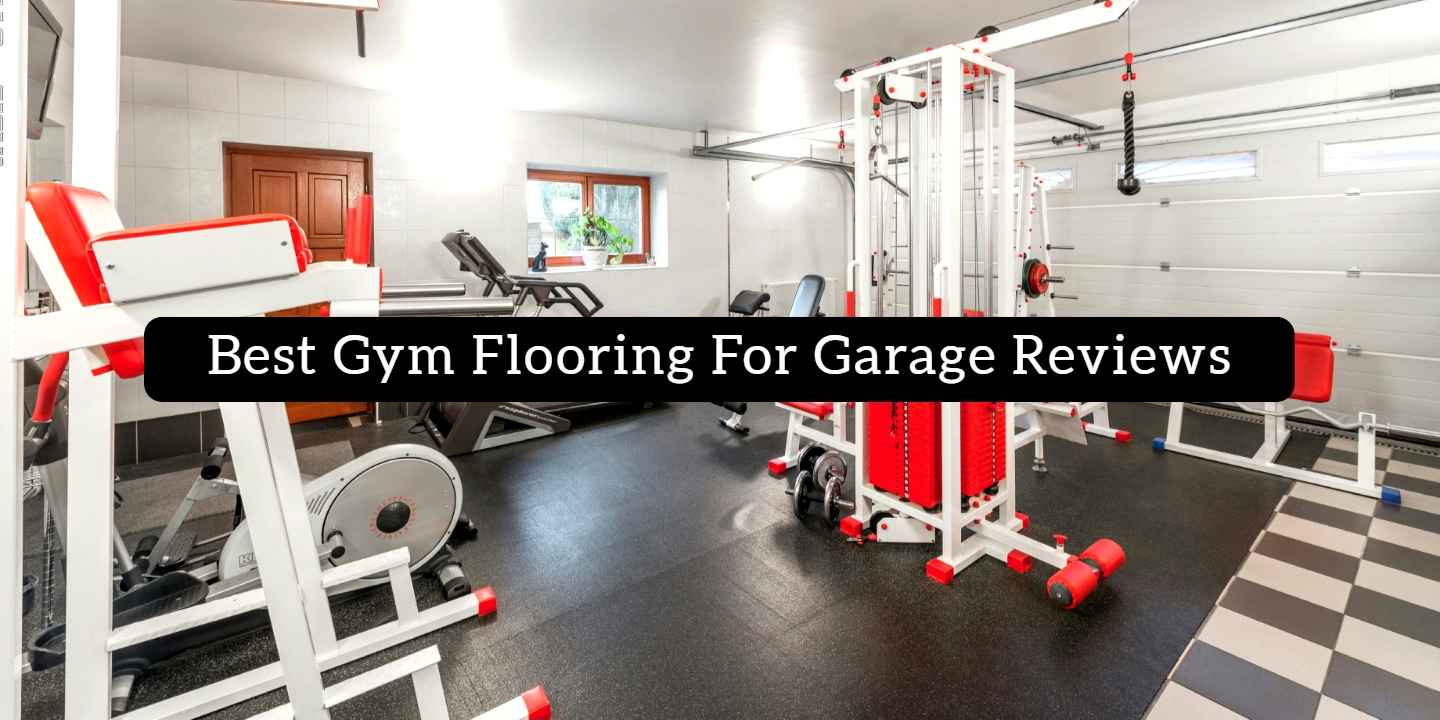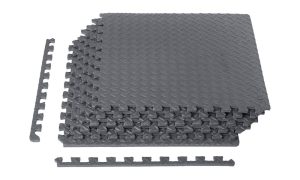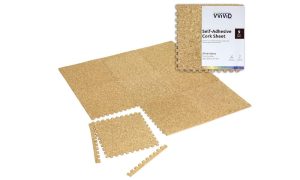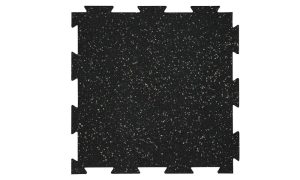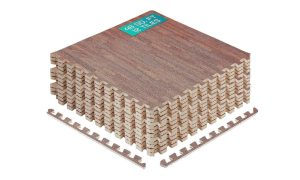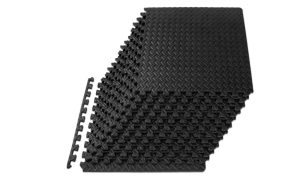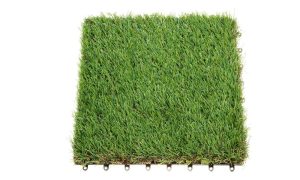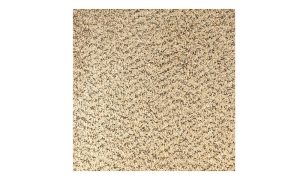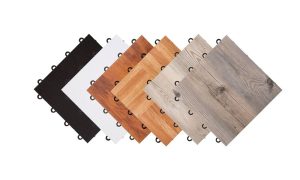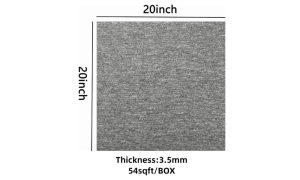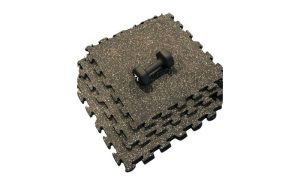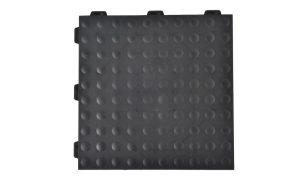Wanna turn your garage into a gym? Well, you have a crucial starting element to pick: flooring.
That’s why we’ve reviewed the best gym flooring for a garage you could try. You should pick it up before getting the gear, as it can make or break the whole experience.
It should be long-lasting to handle the requests of your routine, comfortable to guard your joints, and easy to take care of. And whether you’re a pro weightlifter or a yoga buff, we’ll help you pick the best one. Let’s dive in!
Amazon Basics Foam Interlocking Floor Mat
These mats are a good fit, particularly if you’re on a tight budget and have low-impact exercise routines. At just over a dollar per sq ft, these are a steal. These provide a layer of cushioning that safeguards your floors from scratches, dents, and potential damage caused by exercise gear. You can also move them with ease.
Key features:
- Readily available: Ideal for starter home gyms on a tight budget.
- Easy to install: Interlocking structure simplifies setup and care.
Pros:
- Low-cost: The top perk is the price tag.
- Installation: Even if you have zero exp, you’ll do it.
- Protective: You can put it under weighty gear with no worries.
- Portable: Great for temporary setups or rearranging your training space.
Cons:
- Durability: Not as strong as rubber and can wear down quickly with regular use.
- Cleaning: The porous surface can trap dirt and sweat, requiring more effort to maintain cleanliness.
- Slippery: Can be slippery, especially in socks, increasing the risk of falls.
Think Twice:
- High-impact buffs: These are not built for intense workouts like CrossFit, plyometrics, or heavy weightlifting. They will likely break down under the pressure.
- Slip-and-slide worriers: The foam can be slippery, particularly in socks. Go for rubber instead.
- Cleanliness champions: The porous texture can trap dirt.
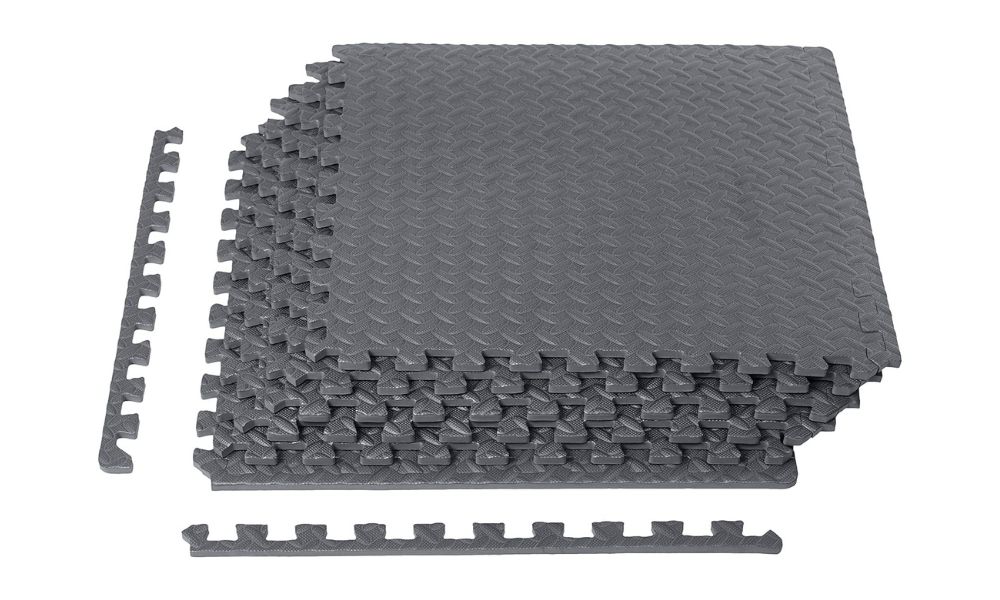
You may also like: Do I Need a Garage Gym? (Ultimate Pros & Cons list)
VViViD Cork Surface Interlocking Foam Floor Mat
These boast a unique twist on traditional exercise mats, boasting a natural cork texture on top of an EVA base. Cork is biodegradable and naturally unsusceptible to mold, and mites, so it works nicely for home gyms. Plus, these come with absorbing shocks and aid for your joints.
Key features:
- Unique natural cork surface: Offers potential ergonomic perks like enhanced balance and proprioception, promoting a healthier training space.
- Stylish: Stands out from traditional black rubber mats with a more natural look.
Pros:
- Eco-friendly: Made from a renewable and biodegradable material.
- Naturally anti-microbial: Resists mold, mildew, and mites, promoting a cleaner training area..
- Comfortable: Warmer and softer surface compared to traditional rubber mats.
- Versatile: Fit both high and low-impact routines.
- Shock absorption: Gives buffering for joints during training.
- Water-resistant: Easy to wash and retain.
Cons:
- Expensive: These are quite costly.
- Susceptible to damage: Rips and scratches easily, requiring extra care.
- Dents from heavy gear: Can leave permanent marks over time.
- Fades in sunlight: Not ideal for areas with direct sunlight exposure.
Think Twice:
- Weighty gear users: While the cork surface is resilient, heavy gear can leave dents over time due to its porous nature.
- Direct sunlight exercisers: Cork is apt to fade and dry out in natural sunlight, making it unsuitable for areas with large windows.
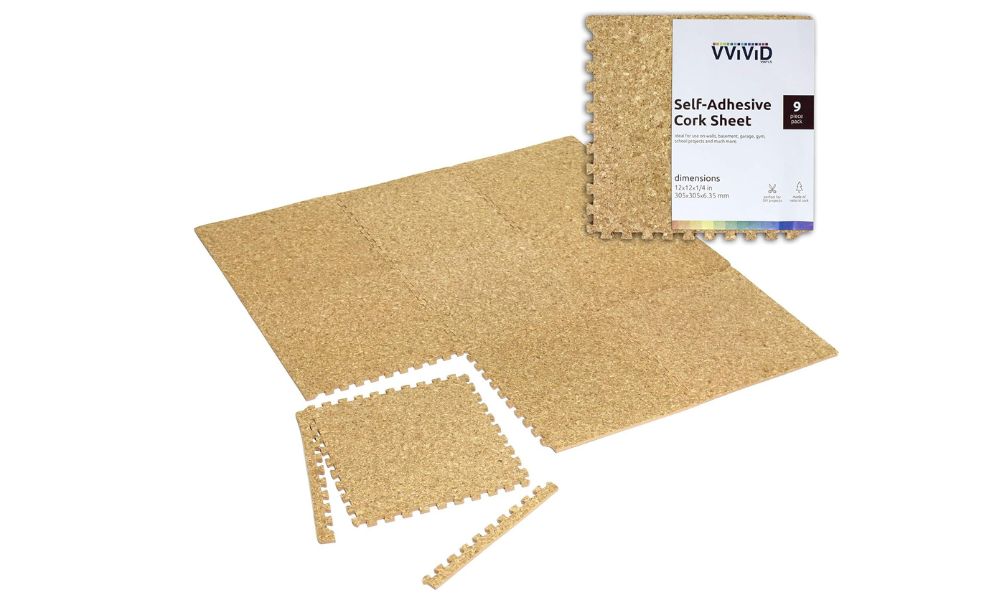
Check out the most popular rubber flooring solutions for garage.
Playsafer Genaflex Lite Rubber Tiles
It’s a low-cost solution for making a functional and somewhat adjustable training area. You can get them in packs or single tiles, so it’s rather simple to match them to your layout (and not overspend in the process). And the nature of these allows for easy cutting with common tools, too.
Key features:
- Portable: Ideal for temporary setups, smaller spaces, or even taking your workout outdoors.
- Durable and shock-absorbent: Adds a protective layer for joints during exercise, despite being lightweight.
Pros:
- Budget-friendly: Available in single tiles and various pack sizes for affordable customization.
- Stain-resistant: Non-absorbing rubber material makes cleaning spills and sweat a breeze.
- Easy to assemble: Puzzle-like connection system allows for quick and effortless installation.
- Durable (with limitations): Can handle moderate use but not recommended for heavy gear.
- 5-year warranty: Provides peace of mind with extended coverage.
Cons:
- Limited weight capacity: Not for serious weights or intense workouts.
- Rubber smell: Might be noticeable and unpleasant to some.
- Limited color options: May not cater to all aesthetic preferences.
- No edge pieces included: Requires DIY cutting for a finished look.
Think Twice:
- Heavy equipment users: The manufacturer recommends these tiles for light to medium gear. They might not handle serious weights or intense activities over time.
- Odor-sensitive individuals: These tiles have a rubber smell that some may find unpleasant, especially in enclosed spaces.
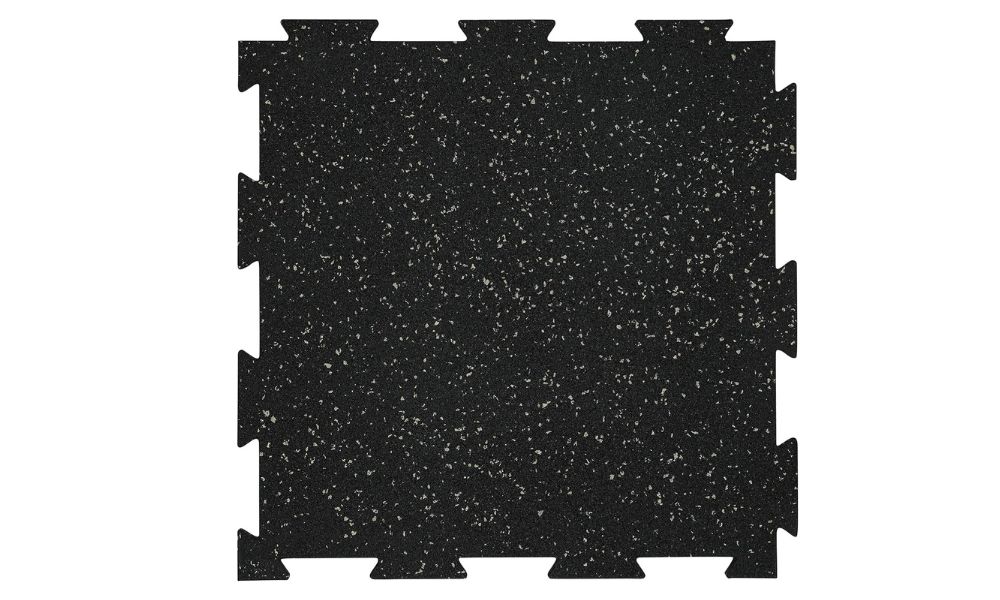
Yes4All Wood Grain Puzzle Exercise Mat
At roughly $1 per sq ft, these are a cost-effective way to form a training space. The foam delivers superior cushioning for floor-based activities like yoga, Pilates, and so on. Plus, the variety of wood grain imprints lets you fit the tiles to your vibe. Maybe you’re not into classic black flooring and want to gain a more natural look. Well, these let you do that.
Key features:
- Wood grain: Blends seamlessly with existing home décor for a more home-friendly aesthetic.
- Puzzle system: Easy to build and disassemble, allowing for flexibility in space use, whether you need to rearrange your gym layout or store them when not in use.
Pros:
- Low-cost: Nice deal for the cost, around $1 per sq ft.
- Portable: Ideal for fleeting setups or limited storage space.
- Comfy: The foam gives superior shock absorption for floor-based activities.
- Installation: Puzzle tiles enable quick installation.
- Colors: You can get them in diverse patterns to match your style prefs.
Cons:
- Durability: Not best for serious weights or gear and might wear down quicker with frequent use.
- Not for heavy gear: Can dent under the force of power racks, weight benches, and similar gear.
Think Twice:
- Lifters and heavy gear users: These won’t work for heavy weights or gear like power racks or weight benches.
- Durability prioritizers: Foam offers lower overall durability and might need replacing sooner, especially with frequent use.
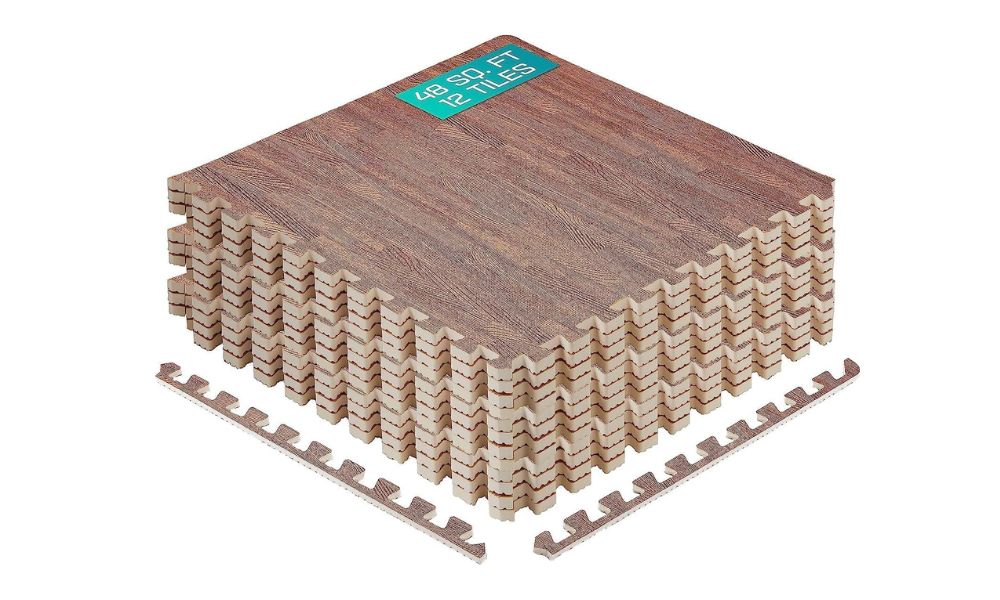
Check also: 7 Best Pull Up Bars for Your Garage Gym
ProsourceFit Puzzle Exercise Mat
Here’s a viable option for those who don’t want to splurge but still need some comfort. The 1⁄2-inch-thick EVA foam delivers nice cushioning for all kinds of training. The 12-pack covers 48 sq ft (6′ x 8′), and they can be cut to fit specific spaces. You can also easily assemble these by yourself.
Key features:
- Double-sided: There are two textures there. One is a smooth side for easy cleaning and there’s a textured side for better grip while training.
- Comfortable: Gives cushioning for joints while ensuring stability, promoting proper form, and decreasing the risk of injury.
Pros:
- Low-cost: A cost-effective way to add padding to your gym.
- Comfy: The EVA foam delivers great cushioning.
- Easy to install: The format lets you get these in place with ease.
- Large coverage: Covers a noteworthy area (6′ x 8′ with 12 tiles).
- Good grip: The diamond pattern offers improved traction.
- Easy to clean: The smooth texture can be washed with diverse supplies.
Cons:
- Low durability: Prone to dents and tears, especially with heavy use.
- Lacks stability: Can feel wobbly during weightlifting due to the soft foam material.
- Potential color variations: Ordering at different times might result in color inconsistencies.
Think Twice:
- Lifters and heavy equipment users: The foam can dent or tear under pressure.
- Stability prioritizers: The EVA foam might be too soft for exercises that require stability.
- Durability seekers: These might show tear faster with frequent use.
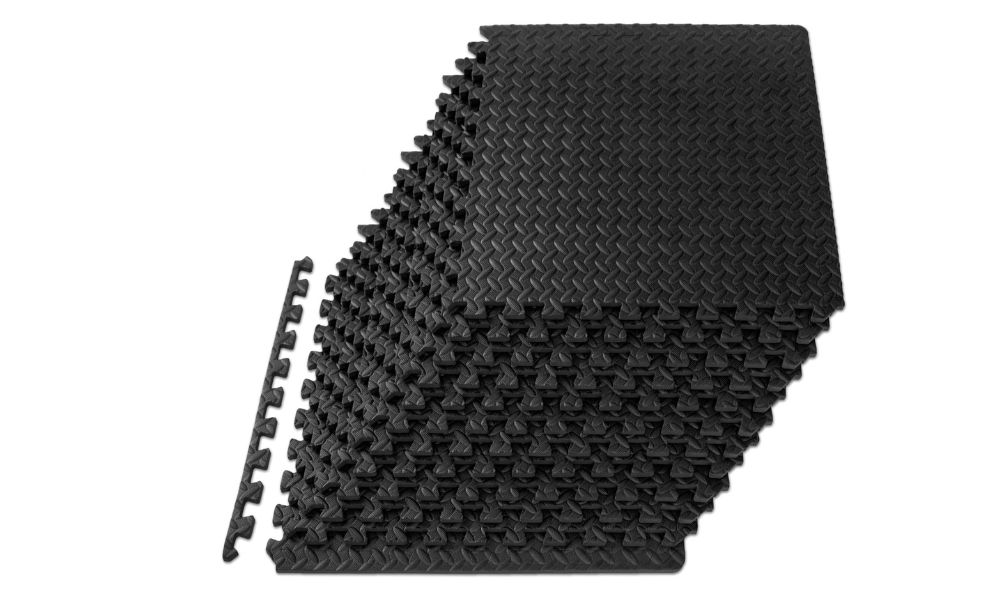
GOLDEN MOON Artificial Grass Turf Tile
These are a gem if you want to replicate outdoor athletic training indoors. It will work for sled pulls, plyometrics, and CrossFit, giving traction for various movements. Also, these are low-maintenance, so you’ll only need to brush them occasionally. And let’s not forget the grass makes a bold visual statement.
Key features:
- Multi-purpose: Suited for both indoor and outdoor use, expanding your workout possibilities beyond the confines of your home gym.
- Excellent drainage: Ideal for practices like sled work that may involve water or sweat, preventing the build-up of moisture and potential slipping hazards.
Pros:
- Durable: Withstands harsh routines like sled pulls and plyometrics.
- Low-maintenance: Needs minimal brushing and cleaning compared to natural grass.
- Versatile: Suitable for diverse routines likes sprints, drills, and so on.
- Easy to install: Puzzle tiles can be put in place quickly.
- Visually appealing: Adds a unique and bold aesthetic to your activity zone.
Cons:
- Abrasive: Can be uncomfortable for floor practices like yoga or kneeling movements.
- Expensive: Significantly more costly than rubber or foam mats.
- Hygiene concerns: Improper cleaning can increase the risk of infections like MRSA or Staph.
Think Twice:
- Floor exercisers: The abrasive texture can be uncomfortable for sit-ups, lunges, or planks.
- Hygiene-focused: Improper cleaning can increase the risk of contracting MRSA or Staph infections, requiring extra attention to hygiene practices.
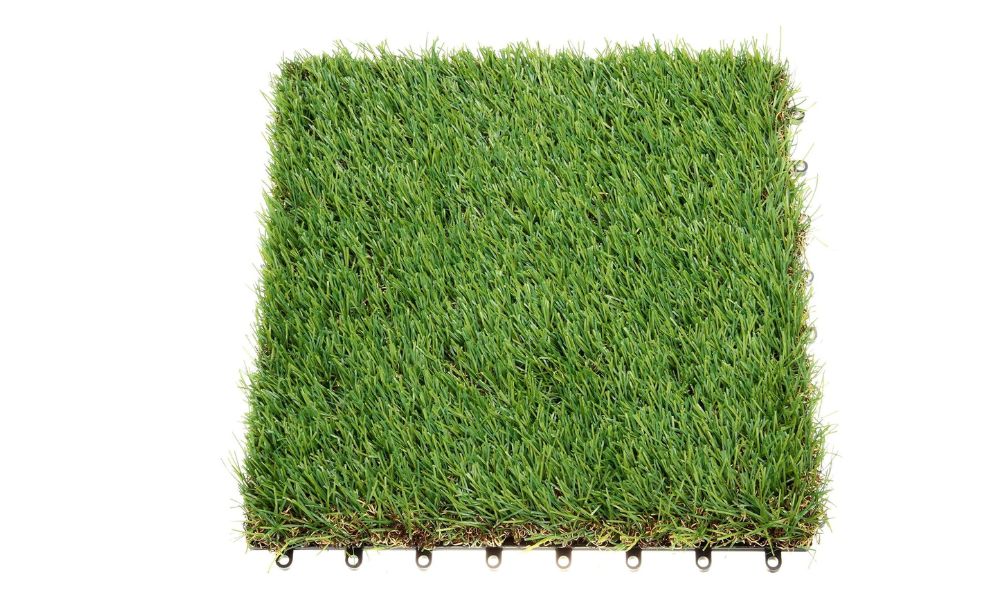
Feather Peel and Stick Carpet Tiles
If you’re all about low-impact training, these tiles will work nicely. The soft carpet surface delivers support for bodyweight routines and you can install them easily, too. You can even mix and match colors if needed.
Key features:
- Installation: Peel-and-stick adhesive backing allows for quick setup and rearrangement as needed. Ideal for renters who don’t want to impair the flooring or those who frequently change their gym layout.
- Comfortable underfoot: Gives a softer surface compared to regular rubber mats, making it more fitting for stretching, yoga, or Pilates.
Pros:
- Comfy: Soft surface gives cushioning for low-impact training.
- Easy to install: Peel-and-stick design requires minimal effort.
- Visually appealing: Comes in various colors for customization.
- Decent coverage: A pack of 10 tiles covers 22.5 square feet.
Cons:
- Lacks durability: Not for intense practices or heavy weights.
- Harder to clean: Carpet fibers trap dirt, sweat, and spills, requiring regular cleaning.
- Might need additional adhesive: Especially in high-traffic areas.
Think Twice:
- High-impact training: It won’t work for harsh exercises due to lack of durability and absorb shocks.
- Cleanliness prioritizers: The fibers can trap dirt, sweat, and debris, requiring regular vacuuming and potential deep cleaning.
- Durability seekers: These are less long-lasting and prone to sagging over time.
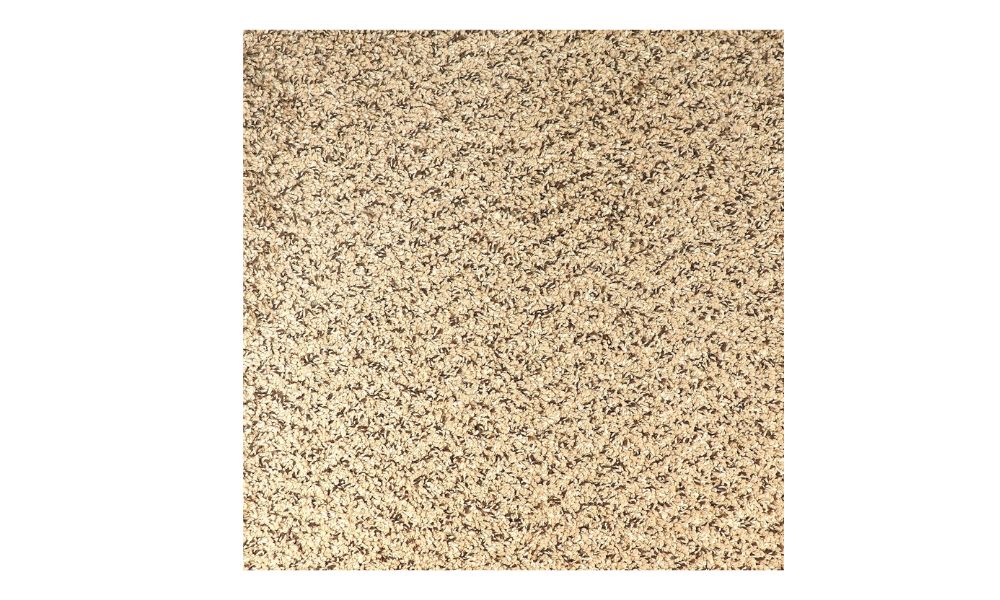
Have a look at: 7 Best Carpet Tiles For Your Garage
IncStores Snap Together Flooring Tiles
These will be great for those who want a gym floor that doesn’t actually look like a gym floor. It works for almost any training and looks stylish enough to satisfy aesthetic seekers. Well, maybe don’t get it if you train hard, but otherwise, it will do the job. The price is not the friendliest, though.
Key features:
- Wood-look: Forms a nice look for your gym, potentially increasing your motivation to train.
- Snap-together assembly: Quick installation without the need for additional tools, saving time and frustration.
Pros:
- Design: Boosts the aesthetics of your gym.
- Durable: Can handle diverse practices, excluding heavy weightlifting.
- Setup: Snap-together format allows for quick setup.
- Variety of wood grains: You can get creative with these.
Cons:
- Can splinter under weights: Not for weightlifting or heavy gear.
- Slippery when wet: The plastic can be hazardous with sweat or spills.
- Costly: Among the pricier options for flooring.
Think Twice:
- Lifters: They can scratch and crack under hefty weights or barbell drops.
- Budget-conscious individuals: These are among the most costly options.
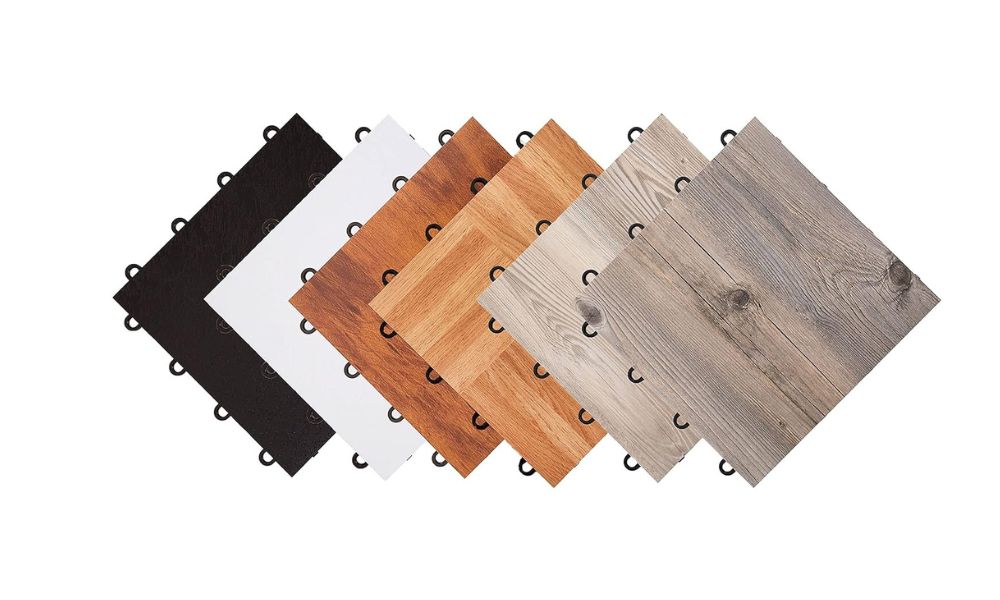
Nisorpa Heavy Duty Carpet Squares
The stats say carpet is actually one of the most-used options for home gyms. Yeah, you might’ve thought otherwise, but it’s true. These have a decent price and good soundproofing, minimizing noise from weights. Plus, it will work for most practices as it doesn’t tear easily.
Key features:
- Low-profile carpet: Offers a comfy and home-friendly feel, making it nice for practices that require spending more time on the ground, promoting proper form and reducing discomfort.
- Decent soundproofing: Helps reduce noise from exercise equipment, minimizing disruption to yourself and others in your household.
Pros:
- Low-key: Has a home-friendly aesthetic.
- Versatile: Will work for diverse training types.
- Comfortable: Soft on the joints and comfy underfoot.
- Soundproofing: Reduces noise from exercise gear.
- Easy to install: Can be cut to fit your layout.
Cons:
- Low shock absorption: Not the best for high-impact training.
- Requires frequent cleaning: Can trap sweat and moisture, potentially causing odor.
- Stretches over time: May need replacement sooner than other options.
Think Twice:
- High-impact exercisers: The carpet has minimal absorb impact, so it won’t be great for jumping jacks or plyometrics.
- Cleanliness sticklers: The fibers can trap sweat and dampness, requiring frequent cleaning.
- Durability prioritizers: These can stretch over time, so you may have to replace them sooner than rubber ones.
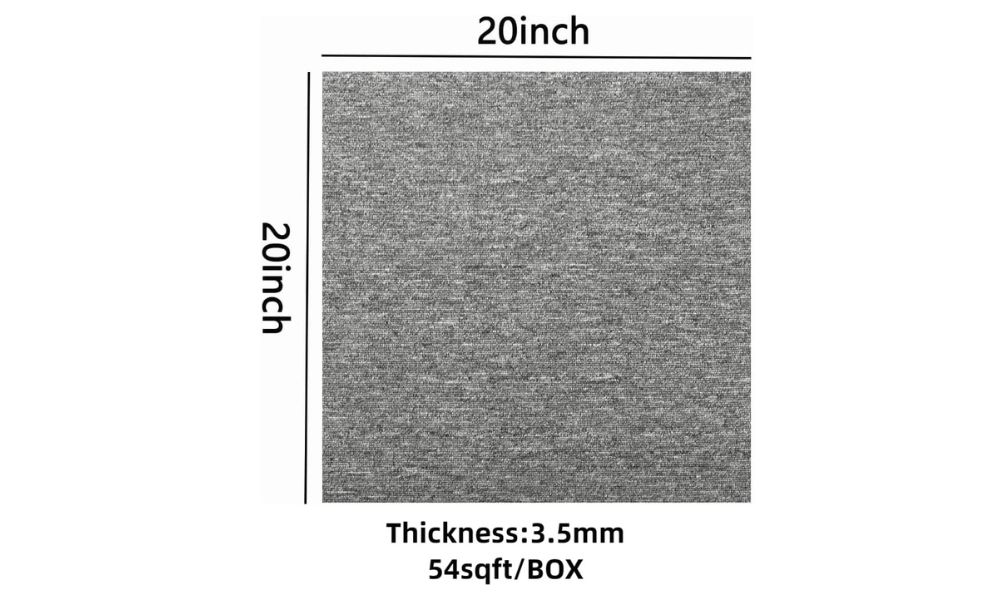
American Floor Mats
These are a must-try for those seeking commercial-grade durability and performance. The 1⁄2-inch thickness and rubber construction deliver shock absorption and support for serious weights. Plus, these are unsusceptible to wear, so the durability makes up for the price.
Key features:
- Top thickness and durability: Ideal for intense use, especially weightlifting, and powerlifting with dropping weights.
- Shock absorption: Covers joints from the impact of harsh activities, lowering the risk of injury and letting you go harder without compromising your safety.
Pros:
- Maintenance: Jigsaw puzzle construction enables quick installation and cleaning.
- Extremely durable: Nice for heavy weights, impact exercises, and long-lasting use.
- Water-resistant: Nice for sweaty workouts, no worries about damage.
- Soundproof: Reduces noise from equipment.
- Colors: Offers some options for customization beyond the traditional black.
Cons:
- Heavy: These can be difficult to move or store if needed.
- Expensive: One of the pricier options.
- Less cushioning: May feel firm compared to softer options like foam or carpet tiles.
Think Twice:
- Individuals with limited space: The heavyweight nature makes them challenging to move or handle for some.
- Those seeking a softer feel: Rubber offers less cushioning and may feel harder underfoot.
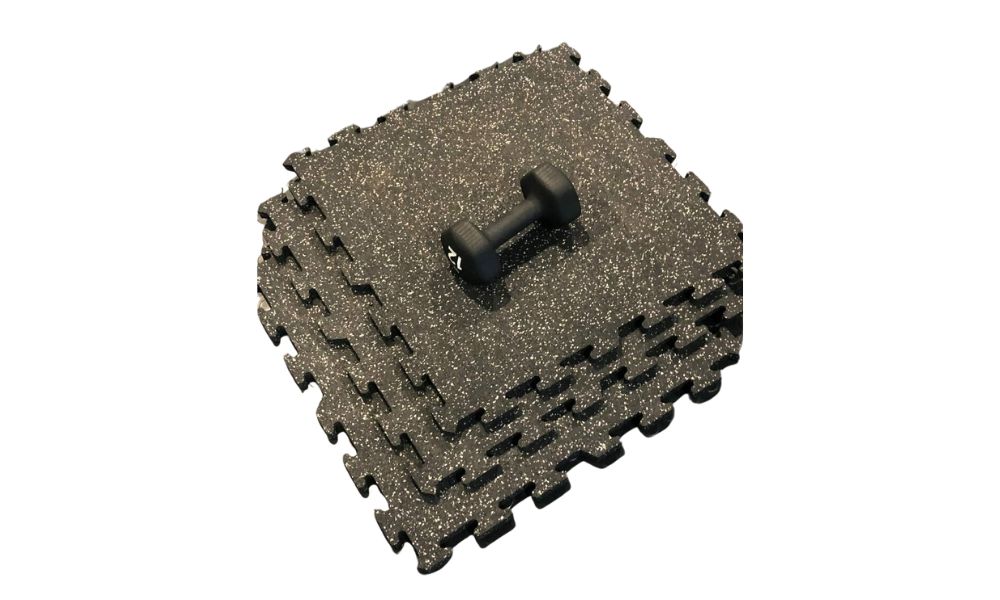
You may also check: 15 Best Garage Lighting Ideas (And It’s Costs)
Greatmats StayLock Fitness Flooring Tile
Here’s another practical option for home gyms. The waterproof and mold-resistant effects make them great for damp environments. Also, the vinyl is easy to clean and can take harsh chemicals. You can easily build them by yourself with no prior experience in such things.
Key features:
- Water and mold-resistant: Nice for damp environments like basements or garages prone to moisture, shielding the flooring from water damage and mold growth.
- Interlocking puzzle: Allows for quick and simple installation without needing adhesives. It might be your first-floor installment, and you’ll still do a great job.
Pros:
- Texture: Provides good traction for diverse activities.
- Long-lasting: Durable and easy to clean.
- Decent price: No need to splurge with this one.
- Mold-resistant: Great for basements, garages, and damp environments.
- Installation: Puzzle format allows for quick setup.
Cons:
- Prone to punctures: Won’t work for serious weights or sharp objects.
- Low shock absorption: Not ideal for high-impact or floor training.
- Potential off-gassing: May emit odors that could irritate those with sensitivities.
Think Twice:
- Weightlifters: The vinyl is susceptible to punctures and tears.
- Yoga and Pilates buffs: The tiles offer limited absorb impact and won’t be comfy for floor training.
- Those with respiratory sensitivities: Vinyl can emit off-gassing odors that might irritate some.
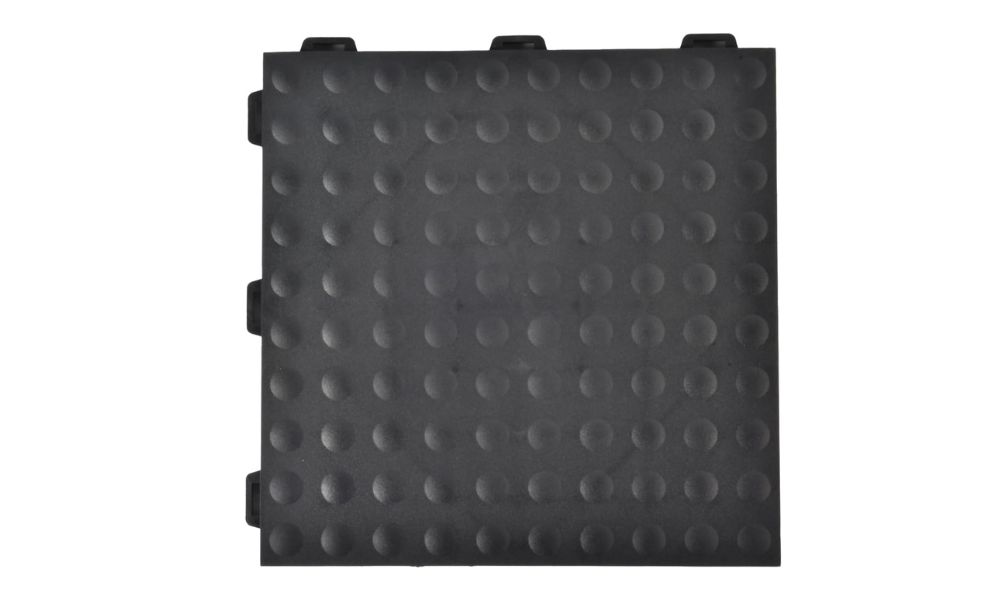
ACHIM Interlocking Foam Anti Fatigue Tiles
These cater to those who prioritize comfort for low-impact training. You can use them for diverse non-weight-bearing practices, and there are quite a few color options, too. The durability may not shine the most here, but if aesthetics matters to you, it’s a solid pick.
Key features:
- Size: These over a significant area efficiently, reduce the number of tiles needed to cover your desired space, saving you time and money on materials.
- Wood grain: Adds a touch of style beyond basic black mats, forming a visually appealing zone.
Pros:
- Shock absorbent: Gives cushioning for joints during low-impact practices.
- Installation: The interlocking format allows for quick setup.
- Large: Covers a significant area efficiently.
- Low-cost: A good deal for the price.
Cons:
- Slippery when wet: The foam surface can be hazardous with excessive sweat or spills.
- Not for serious weights: Can splinter or crack under heavy impact.
- Not water-resistant: Requires individual cleaning or replacement if wet.
Think Twice:
- Lifters: These can scratch, splinter, and crack under barbell drops.
- High-intensity exercisers: The foam surface can become slippery when wet from sweat or spills.
- Water-resistant seekers: These tiles require individual tile cleaning or replacement if they get wet.
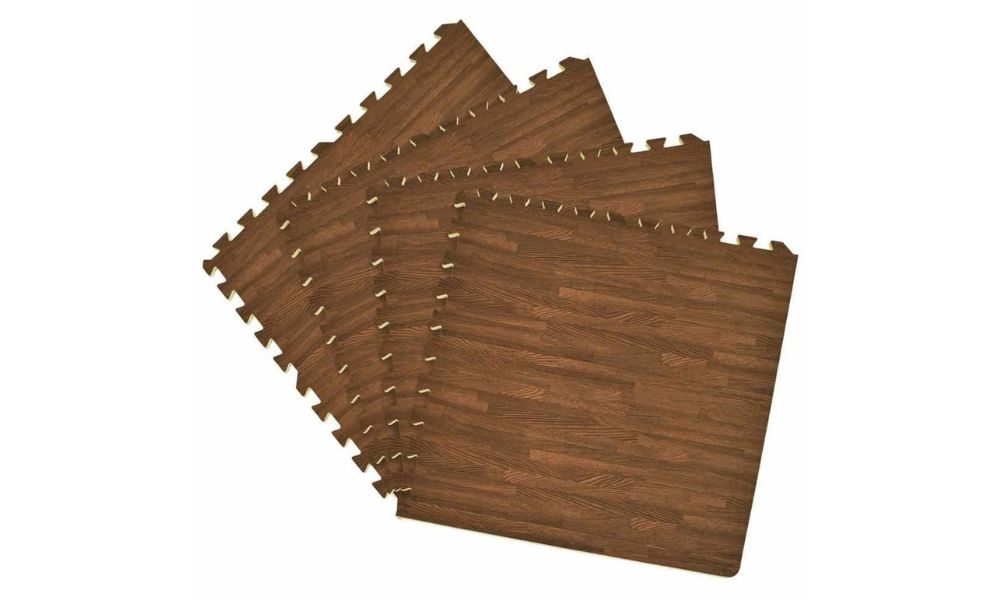
Rubber Flooring Inc. 8mm Strong Rubber Rolls
If you want retail-grade quality, these rolls will give it to you. The 8mm thickness and rubber construction form superior impact absorption and support. Plus, these decrease noise from exercise equipment.
Key features:
- Great for large spaces: Ideal for bigger home gyms on a budget, stretching your dollar further without compromising on quality or performance.
- Commercial-grade performance: Offers outstanding durability and impact absorption for frequent use.
Pros:
- Quality: Offers superior durability and performance.
- Shock-absorbent: Nice for heavy weights, impact trainings, and long-lasting use.
- Water-resistant: Nice for sweaty training and damp areas.
- Soundproof: Reduces noise from equipment.
- Economical: Cost-effective way to cover large areas.
Cons:
- Labor-intensive installation: Requires cutting, potentially splicing, and securing with carpet tape.
- Heavy: The weight of the rolls can make maneuvering and installation challenging.
- May require additional carpet tape: To prevent rolls from shifting during use.
Think Twice:
- DIY novices: Cutting and installing rolls needs effort and planning.
- Those with limited space: The large roll size might be difficult to maneuver.
- Those seeking a softer feel: Rubber offers less cushioning and may feel harder underfoot.
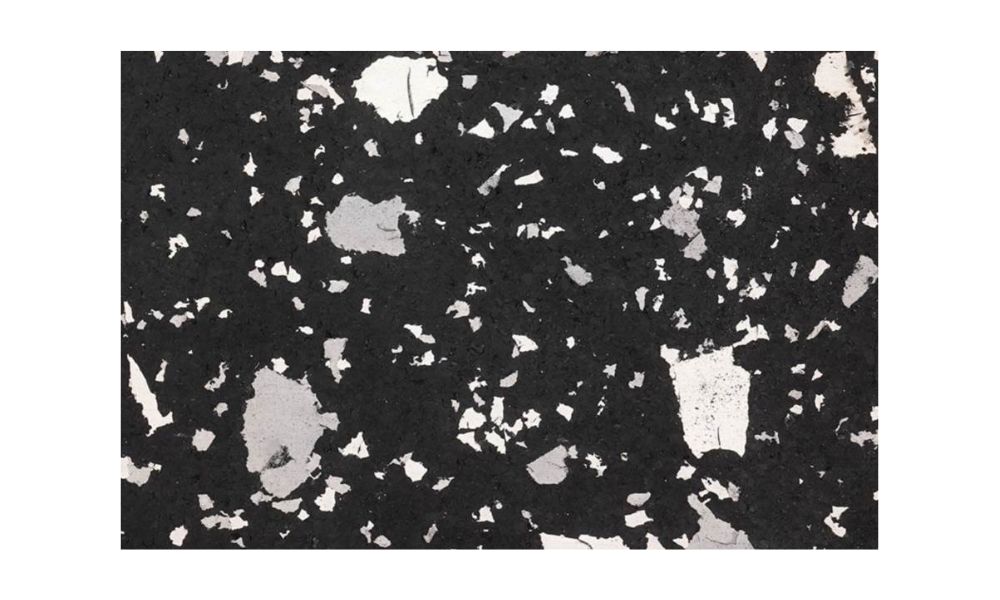
Give this a read: 10 Free Garage Floor Planners for Windows, Android, iOS
Rubber Flooring Inc Performance Turf Rolls
That’s a versatile and functional option, particularly for high-impact activities. The turf delivers solid shock absorption, minimizing joint stress. You can also adapt them for outdoor usage if needed. It will work nicely because of the drainage holes in the non-cushioned option.
Key features:
- Polyethylene construction: Offers better impact absorption and a softer feel compared to standard nylon turf, making it more comfy for floor-based practices.
- Drainage holes (optional): The non-cushioned back option allows for water drainage, making it suitable for outdoor use.
Pros:
- Shock absorption: Ideal for harsh routines to protect joints.
- Durable: Can take harsh training and heavy weights (except for dropping).
- Easy installation: Rolls out and can be secured with carpet tape.
- Cleaning: You can clean it with anything.
- Versatile: Usable indoors or outdoors (get the non-cushioned option for drainage).
Cons:
- Costly: More expensive than some other options.
- Not suitable for weightlifting: Can be damaged by dropped gear.
- Less comfy for floor training: May feel abrasive on bare skin.
Think Twice:
- Weightlifters: Turf is not ideal for weightlifting due to the risk of damage from fallen weights.
- Budget-conscious people: At $2.79 per square foot, it’s relatively expensive.
- Floor exercise buffs: It can still feel abrasive for practices like yoga or Pilates.
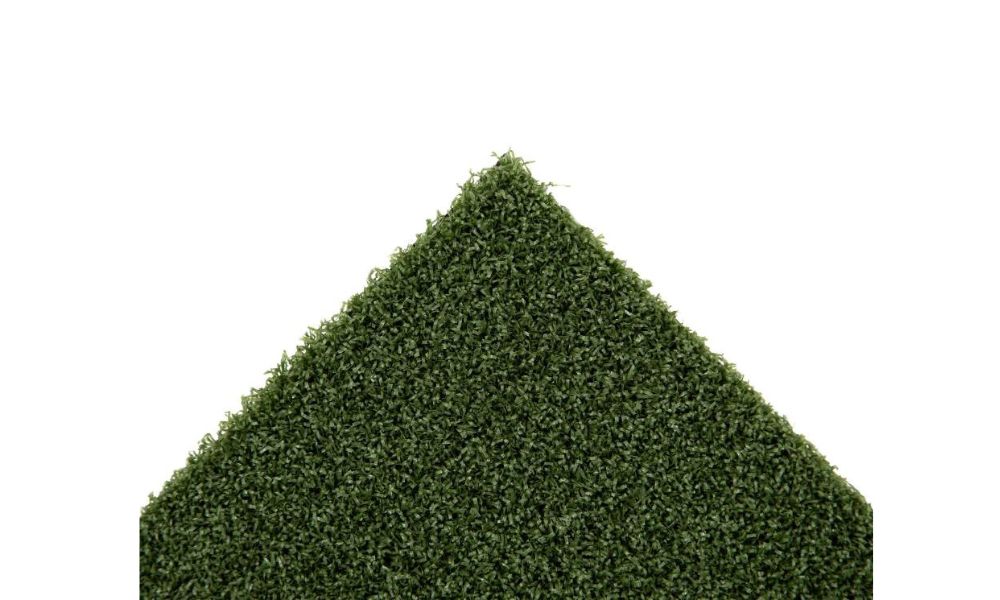
FAQ
Can You Use A Garage As A Gym?
Absolutely! Garages offer a spacious and dedicated area to set up your home gym.
- Accessibility: Garages are readily available in most homes, so why not convert them?
- Customization: You can tailor your gym space to your prefs.
- Convenience: You can train at any time without leaving your home.
Just ensure proper ventilation to avoid breathing in harmful fumes, adequate lighting for safe and comfy training, and access to electricity if you plan to use equipment that requires power.
What Size Garage Do You Need For A Gym?
The size depends on your gear and style:
- Weightlifting: Requires more space for platforms, benches, and storage for free weights and barbells. Aim for a two-car garage (around 480 sq ft) or larger for comfortable movement and safety.
- Cardio and bodyweight: May require less space, potentially even working in a one-car garage (around 200 sq ft) with efficient equipment choices and planning.
Remember, even smaller spaces can work with creative equipment choices like resistance bands, suspension trainers, and bodyweight trainings.
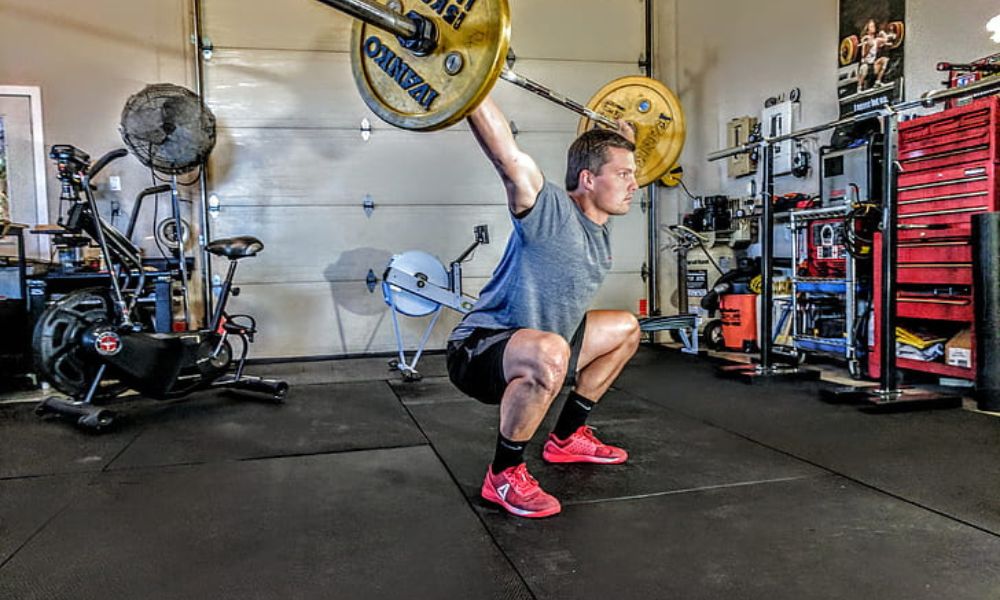
What Is The Best Flooring For A Gym Floor?
There’s no single “best” option as it counts on your prefs, too. Consider these:
- Style: High-impact sports like weightlifting require long-lasting and shock-absorbent options like rubber, while yoga or Pilates may benefit from softer and more cushioned ones like foam tiles.
- Budget: Explore diverse options within your budget range, with rubber and foam tiles offering a good balance of affordability and functionality.
- Features: Look for features like water resistance for moisture-prone garages, easy building for DIY enthusiasts, or aesthetics to create a motivating environment.
What To Look For In Garage Gym Flooring?
Here are some key factors to consider:
- Durability: Pick one that can handle the wear of your practice, particularly if using serious weights.
- Shock absorption: Get options that absorb impact to guard your joints and reduce strain.
- Comfort: Consider the level of comfort needed, especially those involving spending time on the ground.
- Moisture resistance: If your garage is prone to dampness, get water-resistant or mold-resistant option.
- Installation: Opt for easy-to-install options if you prefer a DIY approach.
What Thickness Should Garage Gym Flooring Be?
It varies depending on your style:
- Weightlifting: Aim for at least 3/8 inches (9.5 mm) to adequately shield the floor from fallen weights and give sufficient support.
- Lower-impact activities: Thinner options like 1/4 inch (6.4 mm) may suffice for activities like yoga or Pilates.
Can You Put Gym Flooring Over Concrete?
Yes, you can typically put gym flooring over concrete. In fact, concrete is a convenient surface for most gym flooring as it gives a solid, level foundation.
What Type Of Home Gym Flooring Is The Safest?
Options with solid shock absorption and anti-slip are vital for safety. The absorption minimizes stress on your joints and texture gives good grip and traction, crucial for training requiring stability. Rubber and foam are typically good for both.
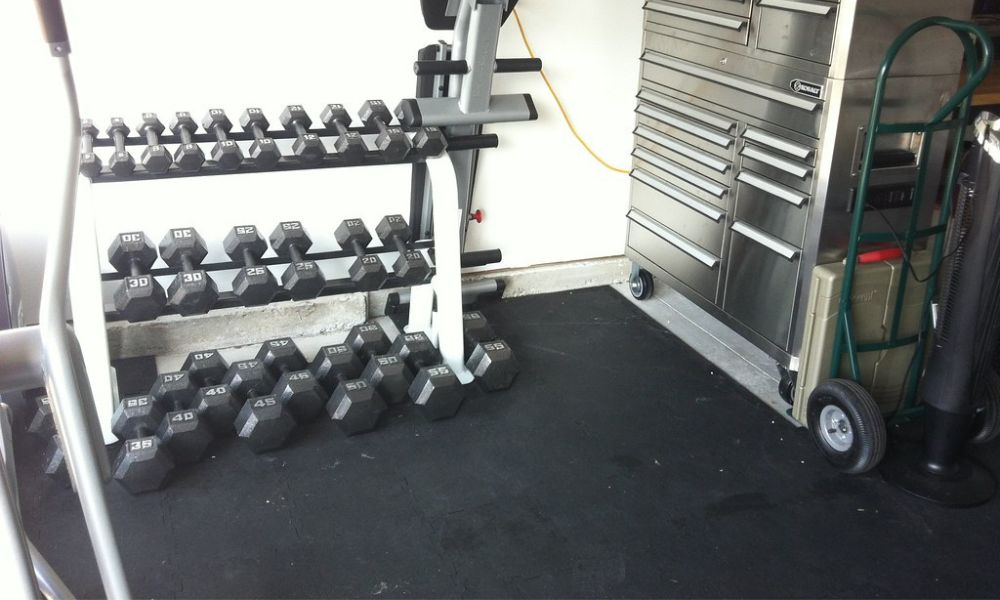
What Is The Most Durable Gym Flooring?
Rubber, particularly retail-grade options, delivers great durability and can handle drastic use, fallen gear, and intense regimens. These might be pricier, but it’s a long-term investment at this point.
Is Turf Good For A Home Gym?
Turf can be a good choice for high-impact activities like box jumps, sled work, or plyometrics. It can help minimize the impact on your joints during these activities.
But it’s not best for weightlifting as it can damage the weights and may not give a stable base. Additionally, it can be abrasive for yoga or Pilates, so consider alternatives for these.
How To Prepare Garage Floor For A Gym?
Well, just like with regular flooring installments, make sure it’s clean, dry, and level:
- Sweep and extract any debris: Get rid of dirt, dust, and any objects that could interfere with the installation.
- Clean it: Use a degreaser or mild detergent to terminate any oil, grease, or other contaminants that could affect the adhesion of the flooring.
- Address cracks and unevenness: If your garage floor has significant cracks or uneven surfaces, consider patching or leveling them to ensure a stable and safe base.
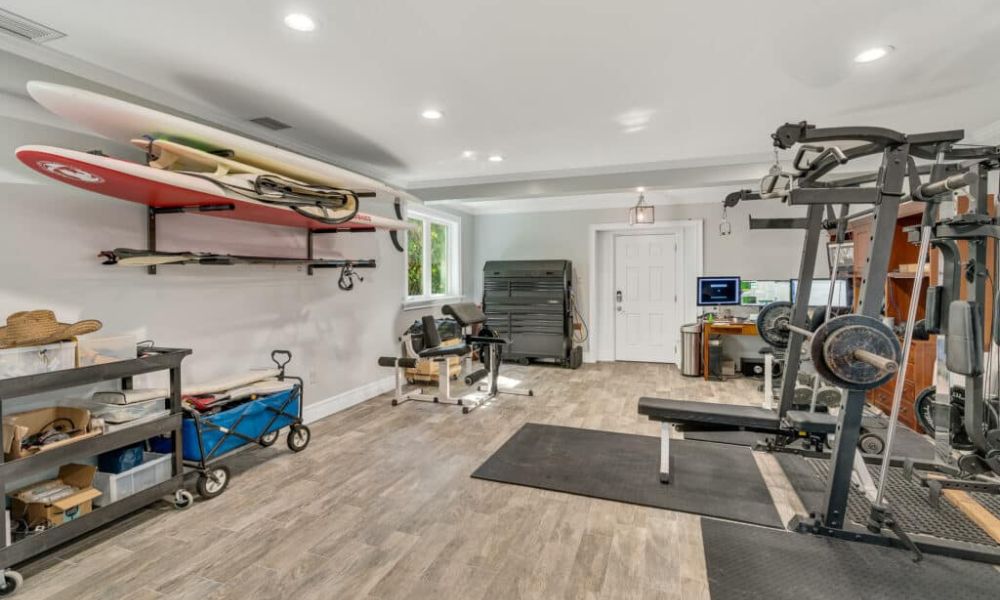
How Often Should You Clean Home Gym Flooring?
It depends on your usage and the type of flooring. Here’s a general guide:
- Frequency: Clean more often if you use your home gym daily.
- Type of training: Activities that involve sweating heavily or using gear that sheds dirt may require more frequent cleaning.
- Type: Some materials, like rubber, are easier to clean than others.
Here’s a general guideline:
- Daily: Wipe down gear and high-traffic zones with disinfectant wipes after each workout.
- Weekly: Vacuum or sweep the entire floor to remove dust and debris. You should check what cleaning supplies are the best for your floor type, too.
- Monthly: Deep clean the flooring with a mop and appropriate solution based on the material.
Regular cleaning helps maintain hygiene, prevent the spread of bacteria, and extend the lifespan of your gym flooring.

